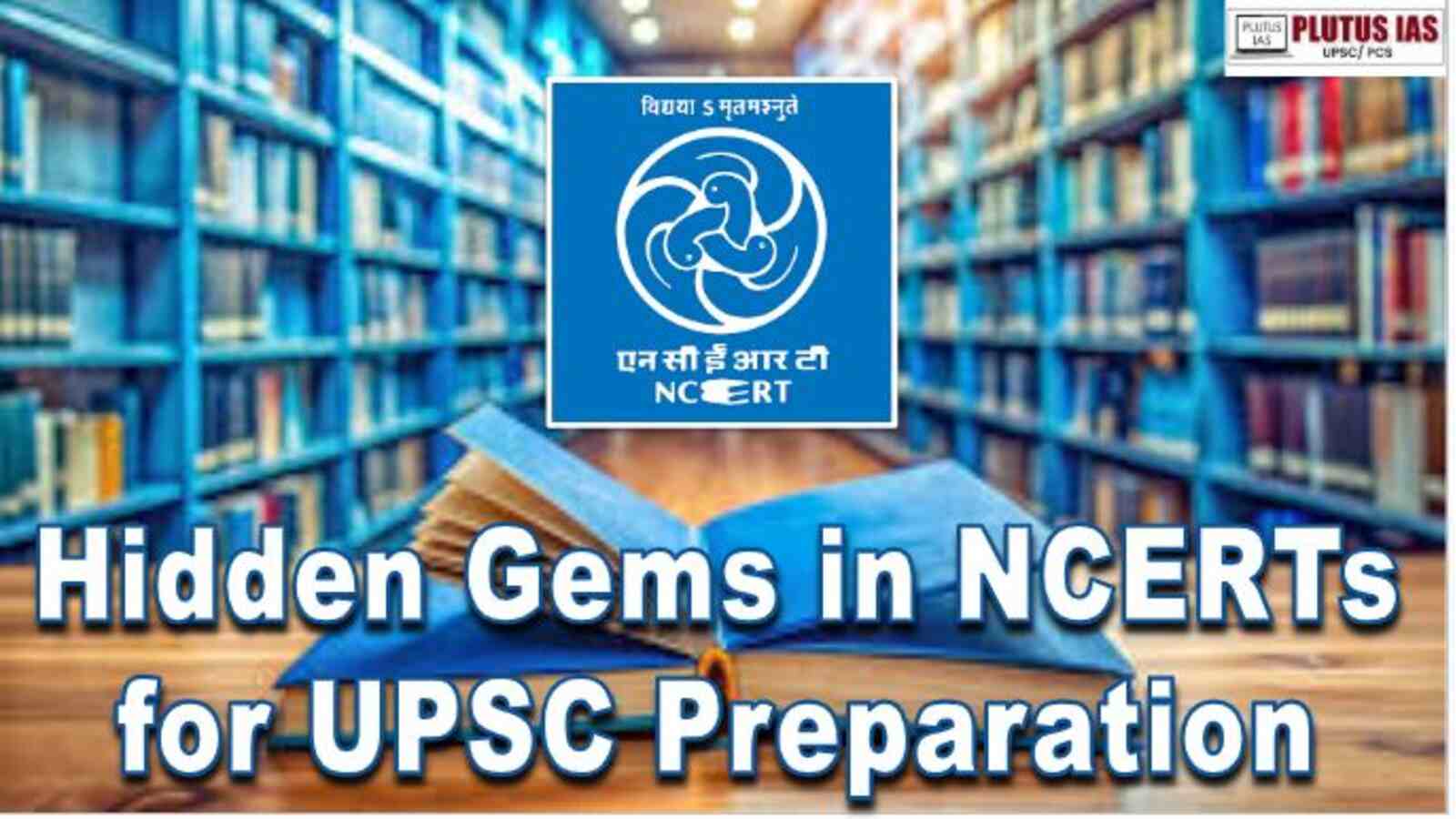
03 Jul Hidden Gems in NCERTs for UPSC Preparation
Every UPSC aspirant has heard this: Start preparation with NCERTs. This is where the UPSC aspirants mostly fail to realise the subtleties hidden in the notes contained in the footnotes, boxes, maps, or a fact given as a single line in the book. Such trivia questions are quite often asked by the UPSC in Prelims and Mains, and if viewed this way, they are a goldmine for any serious aspirant. In this article by plutusias.com, we will discuss Hidden Gems in NCERTs for UPSC Preparation.
Here are six hidden yet powerful parts of the NCERTs through History, Geography, Polity, and Economics that help in cracking the UPSC Civil Services Exam.
Read More: Best UPSC Coaching in Delhi
1. Ashoka and the Ethics of Governance – Class 6 History
Just as one might consider it a simple statement of history that Ashoka gave up war after the Kalinga battle, the sentence opens gates to various important UPSC-related concepts:
- Ashoka’s Dhamma: the model for ethical governance based on compassion, tolerance, and respect for all life.
- Role of emotions in state policy: A rare example of grief transforming an administrative philosophy.
- Impact on Mauryan administration: from expansionism to welfare state.
Why It Matters: These are commonly referred to in GS-1 (History), Ethics (GS-4), and Essays related to governance and morality.
2. Industrial Revolution & Society – Class 11 World History
The Themes in World History book is a treasure trove in regard to the Industrial Revolution. Some UPSC-specially highlighted topics include:
- Luddite Movement: Early resistance to mechanisation.
- Guild System: Structure of labour before industrialisation.
- Factory Laws: Regulating private enterprises for the first time.
Why It Matters: These topics help you answer GS-1 history questions and link to GS-3 issues like labour rights, economic policy evolution, and reforms.
3. Basic Geography – Classes 6 to 8
NCERT Geography books for lower grades present the so-called definitions that could appear too basic, but UPSC questions often target this simplicity.
- Delta vs Estuary: The UPSC has asked this directly.
- Plateau Formation: Map and Concept-based MCQs.
- Rain Shadow & Westerlies: Climate-related concept.
Why It Matters: Don’t ever skip blue-box definitions or diagrams; UPSC questions fundamentals in a clear, textbook language.
4. Boxed Information in Physical Geography from Class 11 NCERT
The textbook Fundamentals of Physical Geography is yet another hidden treasure; some of the most UPSC-applicable yet unnoticed concepts are:
- Coriolis Force: Neighbours Prelims with wind direction questions.
- Jet Streams: Explaining Indian monsoon anomalies.
- Ocean Currents (such as El Niño, Humboldt Current): Frequent MCQs in environment-climate.
Why It Matters: Those grey-colored side boxes or chapter-end summaries contain very powerful information, Prelims gold.
5. Democratic Rights and Institutions – Class 9 & 10 Polity
NCERT’s simple treatment of Indian Polity at these grades can shape your Mains answers. For instance:
- Democratic Rights: Real-life examples of freedom, equality, and justice.
- Working of Institutions: How Parliament, President, Judiciary, and Bureaucracy interact.
Why It Matters: These books help you develop a foundational understanding before jumping into Laxmikanth. Further, you get ethical angles for both GS-2 and GS-4.
6. Rural Economy and Employment – Class 9 Economics
Chapter 1, The Story of Village Palampur, is deceptively simple but deeply analytical. It delves into:
- Disguised Unemployment: A classic question for Prelims and GS-3.
- Factors of Production: Land, labour, capital, and entrepreneurship with examples.
- Role of non-farm activities: Critical for rural development and inclusive growth.
Why It Matters: Essays and case studies-based questions on rural economy, poverty, and employment generation.
Also Read: Best UPSC Coaching in India
Conclusion
While NCERT is largely considered a freshman-level text, the finer details are usually overlooked from its real value, short statements, footnotes, side-boxes, diagrams, and elementary definitions. Such hidden nuggets are often the veritable source of questions in UPSC Prelims and help in crafting solid conceptual answers for Mains. In other words, a candidate who reads an NCERT book deeply, instead of quickly skimming headlines or chapter summaries, gets a subtle but mighty advantage. The next time you start revising NCERTs, I urge you to slow down and focus on the finer details, because it’s usually the lesser-expected facts that are worth the most marks in UPSC.




No Comments